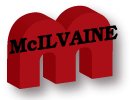
CATER Mask
Decisions
January 26, 2021
HVAC, Fan Filter Units, Air Purifiers and Safe
Bubbles
Benefits of Latest ASHRAE Recommendations
Explained by enVerid
Philadelphia Reopens Restaurants but has a
Self-Certification Process to Expand to 50% from
25%
Michigan Allows Indoor Dining with Certification
Process
Chicago Now Allows Indoor Dining
More High Efficiency Masks
__________________________________________________________________________
HVAC, Fan Filter Units, Air Purifiers and Safe
Bubbles
The
latest ASHRAE recommendations can be part of the
safe bubble concept. The safe bubble concept
includes a rating which assures those entering
the bubble that they will be as safe as mandated
by local regulations.
If companies such as SGS can validate that
sanitation meets the guidelines they can
validate air quality. The mandate for 25%
occupancy was used in the Alert yesterday as an
example. To meet this mandate a facility must
show that it has no more risk than if it reduced
occupancy to 25%.
So this is the equivalent of a 75% risk
reduction from full occupancy.
Instead of the typical cloth mask, if everyone
entering the bubble has a tight fitting
efficient mask the risk will be reduced by 99%.
But people will not wear their masks at all
times and some may not wear them properly. Most
importantly people need to take off their masks
to eat and shower. They also desire to remove
their masks when in areas of low risk.
HVAC and local air filtration can be used to
offset the vulnerabilities of mask wearing.
People
will need to remove their masks in lunch
rooms. Local air purifiers and particularly fan
filter units are valuable in reducing risk in
this area. When an individual is in a relatively
isolated work space he can remove his mask if
the HVAC system is adequately controlling and
cleaning the air he breathes.
In lobbies, elevators, and other spaces where
diverse people will be mingling in relatively
close quarters air cleaning will contribute
significantly to risk reduction.
A validating firm such as SGS is not going be
able to assess absolute risk because this is a
function of the varying viral load in the
community. However it can creditably determine
the relative risk reduction.
Mask use and efficiency plays such a crucial
role it has to be the foundation of the risk
assessment. The local dust hood in industrial
ventilation is the equivalent. It is unthinkable
that you would let lots of dust escape at the
source and rely solely on HVAC to purify the
air.
Instead plants go to great lengths to
minimize fugitive dust. The COVID risk
assessment has to start with the mask
effectiveness and then assess ambient air
cleanliness.
The Respirable Crystalline Silica Rule by OSHA
is an example. Recent OSHA requirements increase
the amount of dust control which is required.
But the rule is written in a manner to
coordinate masks and air filtration.
• Determine the amount of silica that workers
are exposed to if it is, or may reasonably be
expected to be, at or above the action level of
25 μg/m3 (micrograms of silica per cubic meter
of air), averaged over an 8-hour day.
• Protect workers from respirable crystalline
silica exposures above the permissible exposure
limit (PEL) of 50 μg/m3, averaged over an 8-hour
day.
·
Use dust controls and safer work methods to
protect workers from silica exposures above the
PEL
·
Provide respirators to workers when dust
controls and safer work methods cannot limit
exposures to the PEL
The difference between COVID and silica dust
risk mitigation is that in one case you use
masks when you cannot otherwise control the
risk. In the other you discard masks when you
can. For COVID you can discard your mask when
you can easily control COVID with HVAC.
The investments in filtration will be permanent
and will also provide protection from indoor air
pollutants. The mask demand will fall as the
virus load drops. The following graph shows that
masks provide most of the protection when the
viral load is high but can be used less
frequently as the viral load drops and
installation of air purification improves.
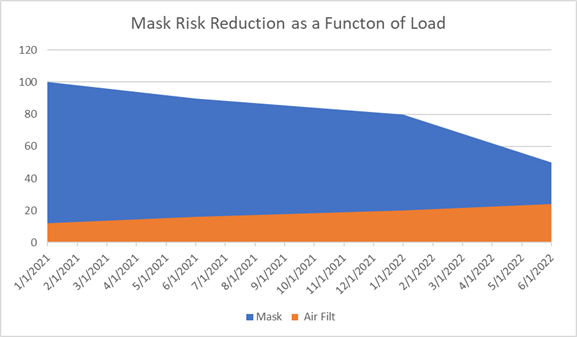
Benefits of Latest ASHRAE Recommendations
Explained by enVerid
enVerid Systems,
fully supports the ASHRAE Epidemic Task Force's
(ETF) updated "Core
Recommendations for Reducing Airborne Infectious
Aerosol Exposure," and
calls on office, school, and institutional
building managers to reevaluate their HVAC
strategies for mitigating COVID-19 in light of
the updated guidance to ensure desired exposure
reduction while minimizing associated energy
penalties.
On Jan. 6, 2021 ASHRAE's ETF posted a refined
and concise summary of its recommendations
across its many detailed guidance documents,
including its Commercial
Guide and School
Guide.
As stated in
the ASHRAE press release, the Core
Recommendations are "based on the concept that
ventilation, filtration and air
cleaners can be combined flexibly to achieve
exposure reduction goals subject to constraints
that may include comfort, energy use and costs."
The Core Recommendations for Ventilation,
Filtration, and Air Cleaning are the following:
-
Provide and maintain at least
required minimum outdoor airflow
rates for ventilation as
specified by applicable codes
and standards.
-
Use combinations of filters and
air cleaners that achieve MERV
13 or better levels of
performance for air recirculated
by HVAC systems.
-
Only use air cleaners for which
evidence of effectiveness and
safety are clear.
-
Select control options,
including standalone filters and
air cleaners, that provide
desired exposure reduction while
minimizing associated energy
penalties.
"With this important update, ASHRAE makes clear
that buildings can achieve safe air exchange
rates with a mix of ventilation, filtration, and
air cleaners to mitigate aerosol transmission,"
said Christian Weeks, CEO of enVerid Systems.
"Additionally, the ETF emphasizes that energy
expenditure is a critical factor in determining
an optimal HVAC strategy for COVID mitigation.
We applaud the ETF's rigorous effort to evolve
their recommendations to account for key
operational considerations, and we encourage
building managers to reevaluate their HVAC
COVID-19 strategies to align with ASHRAE's
updated guidance to deliver safe indoor air
without the high energy penalty of
ventilation-only approaches."
In the early days of the pandemic, the ASHRAE
ETF released preliminary guidance that called
for maximizing outside air ventilation. This
strategy has several drawbacks including high
energy penalties and increased carbon emissions.
During an October
webinar,
Prof. William Bahnfleth, Chair of ASHRAE's
Epidemic Task Force, explained that initial
guidance from ASHRAE was very conservative
without consideration for cost, operational, and
seasonal weather impacts. Over time the ASHRAE
ETF has evolved its guidance, and the Core
Recommendations refine the ETF's findings into a
streamlined prescription to mitigate the
transmission of infectious airborne aerosols in
commercial buildings.
According to Prof. Bahnfleth, "ASHRAE's Core
Recommendations are based on an equivalent clean
air supply approach that allows the effects of
filters, air cleaners other removal mechanisms
to be added together to achieve an exposure
reduction target." Experts from Harvard Chan
School of Public Health recommend six air
changes per hour (ACH) as the ideal exposure
reduction target for schools. Six ACH means the
air inside building spaces will be exchanged for
clean air once every 10 minutes. Clean air is
defined as outside air or recirculated air that
has been filtered by high-efficiency filters
such as MERV-13 filters and local HEPA filters.
"We welcome the new ASHRAE ETF Core
Recommendations, and the emphasis on a flexible
combination of HVAC strategies to address indoor
air quality allowing important considerations
such as energy penalties, outside air quality
and other factors to be part of the equation,"
said Robert Ioanna, Senior Principal at Syska
Hennessy. "Today's priority is halting
transmission of SARS-CoV-2. Tomorrow's will be
ensuring HVAC systems address the dual
priorities of pandemic proofing and maximizing
energy efficiency – with the end goal of high
IAQ, lower operating costs and reduced carbon
emissions."
enVerid continues to share a range of
resources to help inform building engineers,
owners, and consulting engineers about IAQ,
infectious aerosols, and contaminants of
concern.
Most recently, enVerid published the enVerid
COVID-19 Energy Estimator,
a free, open-source tool to help building
owners, mechanical engineers, and facility
managers evaluate the risk, costs, and carbon
impacts of different ventilation and filtration
approaches to reopen buildings safely. The
Energy Estimator shows that installing
high-efficiency filtration can be as effective
and lower cost than increasing ventilation rates
to achieve target air exchange rates to reduce
bioaerosol exposure risk.
Additional resources for building managers and
engineers include a White
Paper on filtration and ventilation,
a Guide
for Improving Classroom Air Quality for COVID-19
Mitigation and
a Webinar
Series on COVID-19 & IAQ: New Best Practices that
features ASHRAE ETF experts.
enVerid Products
enVerid's HVAC Load Reduction® (HLR)
technology saves money for commercial property
owners and occupiers by enabling the reduction
of outside air without compromising indoor air
quality. HLR technology does this by scrubbing
indoor air of all molecular contaminants of
concern. ASHRAE Standard 62.1 defines two
procedures for mechanical ventilation: the
Ventilation Rate Procedure (VRP) and the Indoor
Air Quality Procedure (IAQP). Unlike VRP, which
defines ventilation requirements based on space
size and occupancy without accounting for the
efficiency benefits of air cleaning
technologies, IAQP is a performance-based
ventilation approach that allows for lower
outside air (OA), and therefore lower energy
expense when air scrubbing technology is used.
Designing HVAC systems using IAQP combined with
sorbent-based air cleaning and high-efficiency
filtration significantly reduces first- and
operating costs without increasing the risk of
airborne transmission of viruses. For
illustration, in a 100,000 ft2 office
building in New York City, by reducing rather
than increasing 10,000 CFM of OA, $500,000 can
be saved on combined first costs and 20-year
operating costs without increasing airborne
virus transmission risk.
The enVerid Air Purifier is a ceiling mounted
HEPA air filtration system with an ultraviolet
germicidal irradiation (UVGI) sterilization lamp
that has been shown to capture 99.99% of viruses
including a surrogate for the COVID-19 virus. A
low-cost, easy to install, and energy efficient
solution, the enVerid Air Purifier is ideal for
offices, classrooms, retail stores, and other
commercial applications seeking to boost
effective air changes per hour.
Philadelphia Reopens Restaurants but has a
Self-Certification Process to Expand to 50% from
25%
The safe bubble concept with validation is an
alternative to the Philadelphia
self-certification which will allow restaurants
to expand from 25% to 50% occupancy
Starting Saturday, indoor dining can resume at
Philadelphia restaurants after the city lifted a
nearly two-month ban due to the spread of the
coronavirus.
They can only operate at 25% capacity and with
no bar seating. No more than four people can sit
at a table, and they must be from the same
household. Guests must wear masks unless they're
actively eating or drinking.
Restaurants must go through a self-certification
process to go to 50% capacity, otherwise, they
are limited to 25%.
Philadelphia is also allowing other "riskier"
settings and activities to resume. Theaters and
performance spaces are allowed to reopen with a
cap on the total number of attendees, including
staff, of 10 percent maximum occupancy. If the
maximum occupancy is unknown, allow 10 persons
per 1,000 square feet. Everyone in attendance
must be masked, and no food or drink is allowed.
the 1 person/100 ft2 is another risk yardstick
which instead of occupancy could be used as the
risk reduction equivalent.
Michigan Allows Indoor Dining with Certification
Process
Michigan is applying the “Pull” portion of the
Push-Pull initiative relative to restaurant risk
reduction. By voluntarily achieving
certification these restaurants will be featured
on the State safe dining website.
The Michigan order will allow for indoor dining
at restaurants with certain requirements;
concessions at casinos, movie theaters and
stadiums; personal services requiring mask
removal; and non-residential gatherings of up to
10 people from two households.
The new order will last three weeks, until
Sunday, Feb. 21.
The voluntary MI COVID-19 Safer Dining program allows food service establishments to become certified by having their ventilation system inspected and submitting their inspection report to the state indicating they are optimizing airflow.
Once certified, businesses will be featured on the Michigan.gov/covidsaferdining website and receive a copy of their certification to post at their establishment to alert diners of their participation.
Funding is proposed for food service establishments to participate as part of the $10 million included in the recent supplemental budget request for restaurant supports administered by the Michigan Occupational Safety and Health Administration.
Chicago Now Allows Indoor Dining
Chicago and suburban Cook County are officially
open for indoor dining for the first time since
late October under coronavirus pandemic
restrictions, officials said Saturday morning.
The announcement that the two regions have moved
to Tier 1 means restaurants will reopen for
indoor service — but at 25% capacity or 25
people per space, whichever is fewer. Bars and
restaurants opening for indoor service will also
be held to a raft of other restrictions.
According to guidelines, tables will be limited
to no more than four people indoors or six
people outdoors. Diners must wear a face
covering except with seated and eating or
drinking, and they must put it back on when
interacting with servers, under Gov. J.B.
Pritzker’s August rules. The Tier 1 restrictions
also state tables must be spaced 6 feet apart;
indoor service will be limited to a maximum of
two hours; and bars and restaurants must close
by 11 p.m. Bars that do not serve food cannot go
back to indoor service yet
More High Efficiency Masks
Here are additional masks with some degree of
filtration efficiency but not necessarily a
fight fit
WWDOLL KN95 face mask (25-pack)
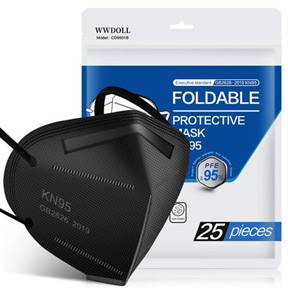
Photo courtesy of Amazon.
Featuring five layers, a foldable design and an
adjustable nose bridge, this mask is available
in black for a different look than the standard
white color.
Amazon $39.99
(for 25-pack)
Dasheng N95 mask (5-pack)
This NIOSH-approved mask has dual-point welded
straps and an adjustable nose grip for a secure
fit.
Lowes $19.99
(for 5-pack)
SupplyAid KN95 protective face mask (5-pack)
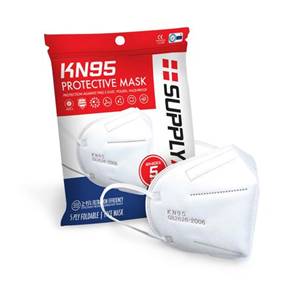
Photo courtesy of The Home Depot.
Featuring a five-layer design, this mask has an
adjustable nose bridge and ear bands to prevent
shifting during movement.
The Home Depot $16.98
(for 5-pack)
Bielcor N95 face mask (20-pack)

Photo courtesy of Sears.
With a rigid outer shell, this mask was designed
for humid or moist environments. As a
NIOSH-approved mask, it can fit adults or
children.
Sears $23.40
(for 20-pack)
World Tech KN95 face mask (2-pack)
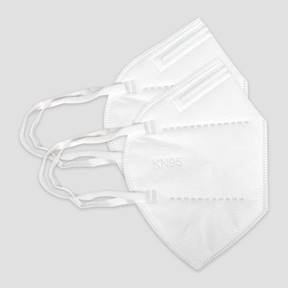
Photo courtesy of Ace Hardware.
This mask features bacteria and filtration
systems with an adjustable nose bridge and ear
bands.
Ace Hardware $5.99
(for 2-pack)
AOK N95 face mask (1-pack)
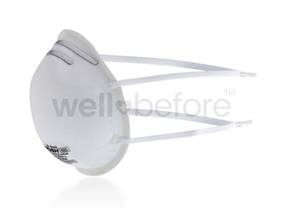
Photo courtesy of wellbefore.com.
If you’re looking to order a single mask, this
option is for you. It’s not only NIOSH-approved
but has a cup shape and two nose bridges for a
close fit. It comes in various sizes to fit
different ages and face shapes.
wellbefore.com $2.99
(for single mask)
ChiSip KN95 face mask (20-pack)
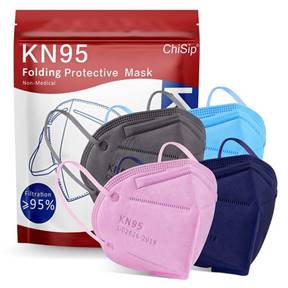
Photo courtesy of Amazon.
Featuring five layers, an adjustable nose bridge
and ear loops, this mask is sold in four
colors... even pink!
Amazon $39.99
(for 20-pack)
Makrite N95 face mask (20-pack)
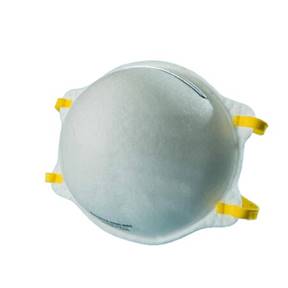
Photo courtesy of Clinical Supplies.
Designed to fit smaller faces, this
NIOSH-approved mask has an adjustable nose
bridge and elastic loops that go around the
wearer’s head.
Clinical Supplies $99.99
(for 20-pack)
